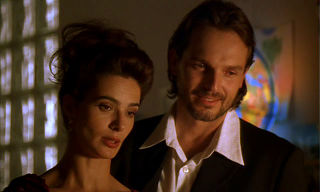
The movie has hardly any
storylines; it is - as a friend told me - a snap shot that lasts
ninety minutes, full of subtleties, which focuses on the portrait
of a woman and the characters that surround her [...]
I wanted to capture the inner
journey of a woman, in which the leading character accompanies me;
a character who asks herself important questions and searches for
her own self constantly through men, until she ends up feeling
touched and excited by a prospect that is alien to her - having a
child.
Pleasure is a secondary factor in
the film; what takes priority is the emotional dimension. Begoña is
limited by her incapacity to have relationships with adults because
she understands that sexual relations demand reciprocity and she
wants to break that vicious circle and live without constraints,
with her back to the conventional aspects of society [...]
Begoña represents a group of women
who, for physiological reasons, are compelled to make a decision
regarding maternity. At any rate, I don't think that the end of the
film is reassuring but it is positive: what I wanted to convey is
that in spite of the calamity of existence, of that sword of
Damocles that hangs over our heads, there is always the hope that
life is livable. In Begoña's case that hope is having a child, the
only person or persons from whom we human beings do not expect
reciprocity.
VICENTE ARANDA.